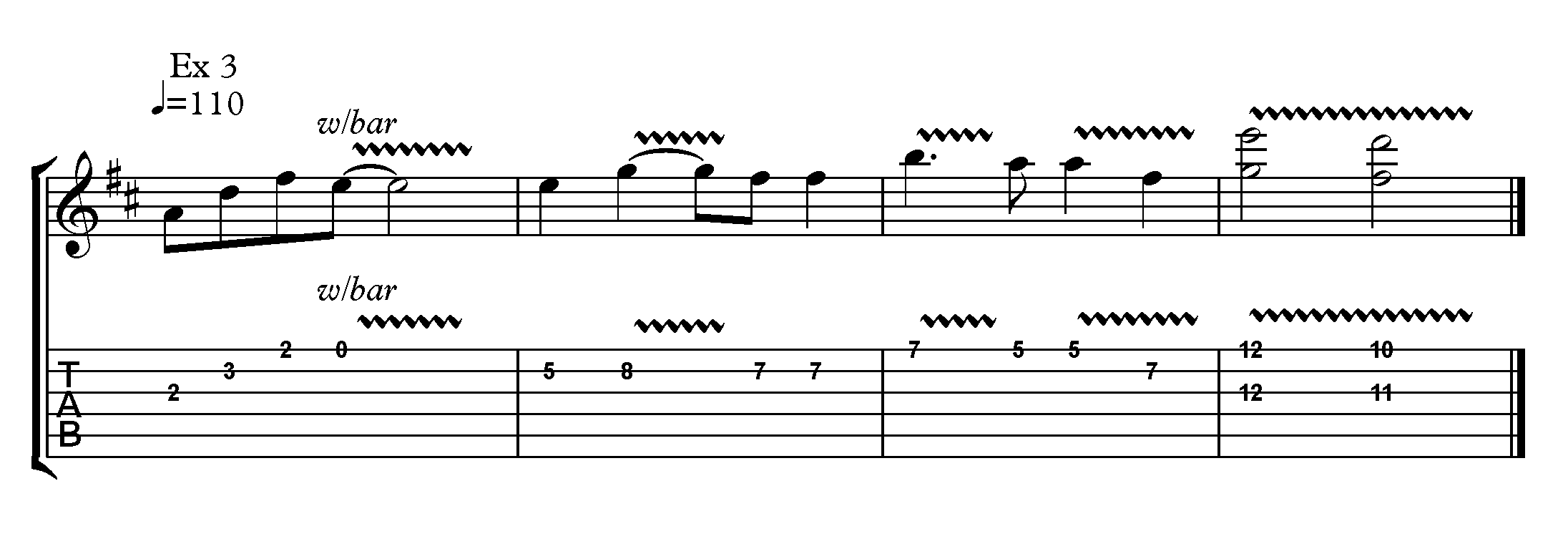Playing With Expression Part 1 – Vibrato
By Robert Thorpe
This new series of articles are aimed at the advancing beginner intermediate guitarist and will try to give tips on the various guitar techniques that will help you to become more expressive with your melodies and soloing.
So you’ve learnt a few scales and are wondering how to turn this dry theoretical information into music? Have you ever heard the phrase ‘it’s not what they said, it’s how they said it’?, meaning the articulation or tone with which someone spoke gave more meaning the utterance than the words themselves, think sarcasm, arguments, or how a parent might talk to their child. In music, this is frequently the case too! So, in order to bring those scales to life, we’re going to look at ways you can articulate each note or group of notes in order to make them into a phrase that lets you ‘say’ something. Don’t be surprised if we keep returning to speech metaphors.
First of all, we are going to address vibrato. This is the oscillation of the tuning of a single note. By moving the pitch up and a down, the held note takes on a more human quality. In fact, many instruments employ vibrato, from string instruments to wind instruments, even the theremin to try to capture the expression of a singing voice.
On electric guitar there are a couple of methods of achieving vibrato. The most common method is to bend the string with the fretting hand. By pulling the string across the fretboard the tension is increased, thereby raising the pitch.
Every great guitar player has a unique voice on the instrument, and a central characteristic is usually their vibrato. The two variables are width of the pitch change (how far you bend the string) and how quickly the oscillation of that pitch change occurs. Classic blues players like Eric Clapton, and BB King generally employ a faster, shallower vibrato, whereas rock and metal players like Steve Vai and Yngwie Malmsteen favour a slow, wide vibrato.
For the modern rock vibrato, the fretting hand twists from the forearm as if you were turning a doorknob, with the thumb just over the top of the neck. Conversely, the ‘stinging’ fast vibrato is best done by removing the thumb from the neck and shaking the string vigorously, with the motion coming from the elbow. Either way, when attempting any vibrato the motion should NOT come from the individual fingers.
Ex 1
First the classic blues vibrato, here applied to the A minor pentatonic scale. Vibrato can help shape a phrase, so it’s best to save it up for the final long note of each phrase.

Ex 2
Here I’ve employed a slow wide rock vibrato in the context of a melody in D major. Don’t be discouraged if it takes time to achieve a strong sound. Persistence will pay off as bending the string with such control does require more strength than the technique in example one.

Ex 3
Finally we look at another method for achieving vibrato – the whammy bar. This example is inspired by Hank Marvin of The Shadows. He would nearly always use the bridge of his Fender Stratocaster to provide the characteristic vibrato. Notice how this differs: With the normal approach the pitch can only be raised, whereas here the pitch is lowered. Also, with the bar, vibrato can be applied to chords as well as single notes.

Recommended Listening: Try to listen to a varied selection of guitarists to see how vibrato differs across genres. Hear Hank Marvin on Cavatina, the Deer Hunter theme, for his beautifully gentle playing.
“The artists you work with, and the quality of your work speaks for itself.”
Tommy Emmanuel
© Copyright Fundamental Changes Ltd 2025
No.6 The Pound, Ampney Crucis, England, GL7 5SA
